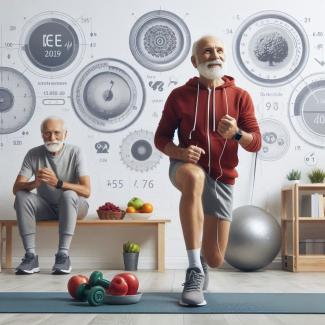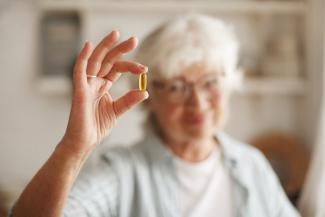
Longevity and quality of life are deeply intertwined with physical activity, as confirmed by decades of scientific research. Regular exercise is more than a pathway to a healthy lifestyle—it’s one of the most effective ways to prolong life and stave off age-related diseases. Physical activity positively affects nearly every organ system in the body, reducing risks of chronic illnesses, supporting mental well-being, and even influencing genetic markers associated with aging.
In this article, we’ll explore in detail how regular exercise promotes longevity. We'll examine groundbreaking studies that reinforce this connection, break down the mechanisms behind exercise's anti-aging effects, and discuss practical approaches to incorporating physical activity into daily life for long-term health benefits.
1. Understanding Longevity and Aging
Longevity can be defined not only as a longer lifespan but as a more vibrant life, free from chronic illness and disability. As people age, cellular changes occur in the body, including DNA damage, decreased telomere length, and the accumulation of senescent cells—cells that no longer divide or function optimally. Physical activity has been shown to counteract many of these aging-related processes, often delaying their onset.
Biological Aging and Cellular Mechanisms
- Cellular Senescence: Over time, cells lose the ability to divide and function efficiently, contributing to aging. Exercise triggers processes like autophagy (cellular “clean-up”) and apoptosis (removal of damaged cells), thereby reducing the accumulation of senescent cells.
- Telomere Health: Telomeres, protective caps on the ends of DNA strands, shorten with age. Studies, such as the 2008 research published in Archives of Internal Medicine, show that individuals who maintain high physical activity levels have longer telomeres than their sedentary counterparts, indicating slower biological aging.
- Oxidative Stress and Inflammation: Aging often involves oxidative damage to cells and chronic low-level inflammation. Regular exercise promotes antioxidant defense mechanisms and lowers inflammatory markers, contributing to healthier aging.
2. Scientific Studies on Exercise and Longevity
Extensive research supports the longevity benefits of exercise. Here are some of the most influential studies:
- Harvard Alumni Health Study: The Harvard Alumni Health Study followed thousands of alumni over several decades. It found that those engaging in at least 2,000 kcal of physical activity per week had significantly lower mortality rates compared to sedentary alumni. Moderate-intensity activities, including walking and cycling, were associated with a reduced risk of cardiovascular disease, stroke, and certain cancers, suggesting that even moderate exercise can have substantial longevity benefits.
- The Copenhagen City Heart Study: This study examined over 19,000 people in Copenhagen, Denmark, assessing the effects of jogging on longevity. The study found that individuals who jogged regularly had a 44% lower risk of mortality and lived, on average, 6 years longer than non-joggers. Notably, the benefits were most pronounced in individuals who jogged at a moderate pace rather than extreme endurance athletes, emphasizing the advantages of balanced exercise.
- The Nurses' Health Study: Spanning several decades and tracking over 120,000 nurses, this study concluded that regular physical activity was inversely associated with mortality risk. Nurses who participated in 150 minutes of moderate exercise per week showed significantly reduced risks of heart disease, various cancers, and Alzheimer’s disease compared to those who did not engage in physical activity.
- NIH-AARP Diet and Health Study: This large-scale study involved over 650,000 participants and provided evidence that even modest amounts of physical activity can lower mortality risk. Findings indicated that those who exercised regularly lived, on average, 3.4 years longer than those who did not, with benefits observed even in people who started exercising later in life.
3. Mechanisms by Which Exercise Promotes Longevity
Cardiovascular Health
- Enhanced Heart Function: Exercise strengthens the heart, enabling it to pump blood more efficiently. Activities that increase heart rate, such as walking, running, and swimming, improve overall heart function, reducing risks of heart attacks and stroke.
- Improved Blood Pressure: Regular exercise lowers blood pressure by enhancing the elasticity of blood vessels and reducing blood vessel stiffness, key factors in long-term cardiovascular health.
- Cholesterol Management: Physical activity improves cholesterol profiles by raising HDL (“good”) cholesterol and lowering LDL (“bad”) cholesterol, reducing the risk of arterial blockages.
Metabolic Health
- Insulin Sensitivity: Exercise increases cells’ sensitivity to insulin, helping to regulate blood sugar levels more effectively and reduce the risk of type 2 diabetes.
- Fat-Burning Efficiency: Regular physical activity trains the body to use fat as a fuel source, aiding in weight management and lowering risk factors associated with obesity, such as metabolic syndrome.
Immune System Support
- Immune Surveillance: Exercise activates immune cells, enhancing the body’s ability to detect and eliminate pathogens, abnormal cells, and even cancer cells.
- Reduced Inflammation: Chronic inflammation accelerates aging and increases susceptibility to diseases. Exercise reduces inflammatory markers like C-reactive protein (CRP) and interleukin-6 (IL-6), helping maintain a balanced immune response.
Mental Health and Cognitive Benefits
- Reduced Risk of Neurodegenerative Diseases: Physical activity is known to increase levels of brain-derived neurotrophic factor (BDNF), a protein that supports neuron growth and repair. Studies show a decreased risk of Alzheimer’s disease and other dementias among those who exercise regularly.
- Improved Mood and Stress Reduction: Exercise releases endorphins, which help reduce stress and improve mood. Physical activity has also been linked to lower levels of depression and anxiety, factors that indirectly support longevity.
4. Types of Exercises and Their Impact on Longevity
To achieve the best results, a balanced exercise program should include various types of physical activities:
- Aerobic Exercise: Activities like walking, jogging, cycling, and swimming enhance cardiovascular endurance, improve lung function, and aid in weight management. Studies have found that aerobic exercise lowers the risk of all-cause mortality and improves life expectancy.
- Strength Training: Resistance exercises such as weight lifting or bodyweight exercises build muscle mass and increase bone density. Strength training is particularly beneficial for aging populations, as it reduces the risk of sarcopenia (age-related muscle loss) and osteoporosis.
- Flexibility and Balance Exercises: Yoga, stretching, and balance exercises improve joint mobility and reduce the risk of falls and injuries. These activities are crucial as we age, supporting mobility and reducing the risk of fractures and other injuries.
- High-Intensity Interval Training (HIIT): HIIT involves short bursts of intense exercise followed by rest periods. It’s especially effective for metabolic health and cardiovascular fitness and provides significant benefits in a shorter amount of time compared to moderate-intensity continuous exercise.
5. Practical Advice on Incorporating Exercise for Longevity
- Start with Realistic Goals: Individuals new to exercise should start slowly, setting achievable goals such as walking for 15 minutes a day. Gradually increase duration and intensity as fitness improves.
- Prioritize Enjoyable Activities: Engaging in activities one enjoys makes it easier to maintain a consistent exercise routine. This might include dancing, hiking, playing sports, or taking group fitness classes.
- Consistency Over Intensity: Research suggests that regular, moderate exercise is more beneficial for longevity than sporadic high-intensity workouts. Consistency is key, so aim for daily movement.
- Combine Different Types of Exercise: Incorporating aerobic, strength, flexibility, and balance exercises ensures comprehensive fitness benefits, covering all aspects of health and physical resilience.
Regular exercise offers one of the most profound and scientifically backed ways to increase longevity and enhance life quality. By strengthening cardiovascular health, boosting metabolic efficiency, supporting mental well-being, and improving immune function, exercise acts as a potent anti-aging strategy. Through consistent effort and a balanced approach to various types of exercise, individuals can enjoy longer, healthier lives, filled with energy and resilience.






